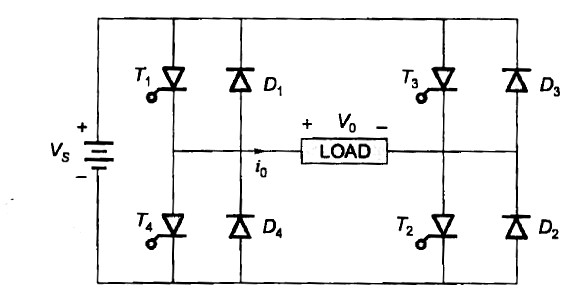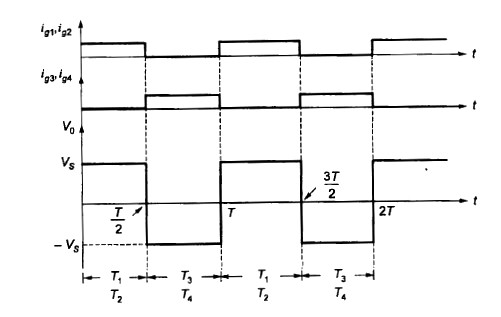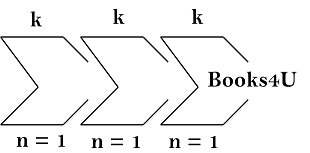In this article, we will discuss the basics of a Single Phase Full Bridge Inverter such as its working using diagram, waveforms for various loads (R, RL, and RLC ) and in the last the mathematical analysis using the Fourier series. The diagram of a typical single phase full bridge inverter is given below:

Diode and
are called Feedback Diodes and they functions only when the load is other than Resistive Load.
These Diodes are called Feedback diodes since they conduct only when the Power flow is negative means Power is being fed back to the DC source, when these diodes conduct.
For a Full Bridge Inverter, when conduct, Load voltage is
and when
conduct load voltage is
. Frequency of the output voltage can be controlled by varying the periodic time
. The waveform of the output voltage for a single phase full bridge inverter is given below:

Steady State Analysis

Resistive Load
and
Square Wave
Each Switching device conducts for or
Each feedback diode conducts for
Pure Inductive Load
Square Wave
Triangular Wave
Each Switching device conducts for or
Each feedback diode conducts for or
RL load
Square Wave
Exponential
RLC Load
When
Overdamped Response
Square Wave
Sinusoidal
Characteristcs equation of an 2nd order series RLC System
Forced Commutation is required because to turn OFF the switches at
, anode current should comes to zero – Due to load, it is not possible because current becomes zero after the voltage becomes zero.
When
Underdamped Response
Forced Commutation is not required because to turn OFF the switches at
, anode current should comes to zero – Due to load it is possible because current becomes zero before the voltage becomes zero.
Load Commutation Occurs due to Underdamped Response
Or
Output Voltage waveform is Half Wave Symmetric hence all even harmonics are absent
⇒
⇒

hi there,
the article is beautiful. i want to know these statements:
1. Due to load it is not possible because current becomes zero after the voltage becomes zero.
2. Due to load it is possible because current becomes zero before the voltage becomes zero.
my question is how we can arrive at this conclusion from damping ratio. i want to understand the concept. for your kind information, i have studied rlc series ckt.
LikeLike
Hello Gourab
Thanks for the compliment, Nice to hear from you.
For your answer please check the below link –
https://electricalbaba.com/load-commutation/
LikeLike
tanks for your reply
but my question is different. i want to know:
how can you say for overdamped system, “current becomes zero after the voltage becomes zero.”
i specificall want to know this………….
LikeLike
Hi there,
I am stuck. Iam waiting for your assistance
LikeLike
❣️
LikeLike